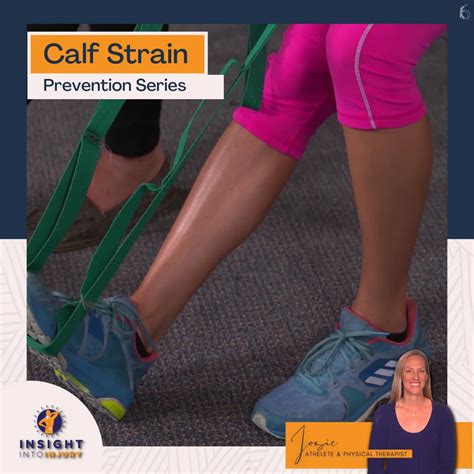The atrial appendage, a small, ear-shaped sac attached to the upper chamber of the heart, has been identified as a significant source of blood clots that can lead to stroke in individuals with atrial fibrillation. Atrial fibrillation, a common heart condition characterized by an irregular and often rapid heart rate, affects millions of people worldwide and increases the risk of stroke by up to five times. The atrial appendage is thought to be responsible for approximately 90% of thrombi (blood clots) that form in the left atrium, highlighting the importance of effectively managing this condition to reduce the risk of ischemic stroke.
Understanding Atrial Fibrillation and Stroke Risk
Atrial fibrillation poses a significant health risk due to its association with an increased likelihood of thromboembolic events, such as ischemic stroke. The irregular heartbeat can lead to blood pooling and clotting in the atrial appendage, and if these clots break loose, they can travel to the brain, resulting in an ischemic stroke. The risk factors for stroke in patients with atrial fibrillation are often assessed using scoring systems like the CHA2DS2-VASc score, which helps clinicians determine the necessity of anticoagulation therapy or other preventive measures.
The Role of Anticoagulation Therapy
Traditionally, anticoagulation therapy with oral anticoagulants (OACs), such as warfarin, novel oral anticoagulants (NOACs), or antiplatelet agents, has been the mainstay for preventing stroke in patients with atrial fibrillation. These medications work by inhibiting the formation of blood clots or reducing the risk of clot formation. However, anticoagulation therapy is not without its risks, including a significant increase in major bleeding events. The decision to initiate anticoagulation involves a careful weighing of the risk of stroke against the risk of bleeding, often assessed using tools like the HAS-BLED score.
Introduction to Atrial Appendage Closure
Given the limitations and risks associated with long-term anticoagulation therapy, there has been significant interest in developing alternative strategies for reducing the risk of stroke in patients with atrial fibrillation. Atrial appendage closure (AAC) has emerged as a promising interventional procedure aimed at mechanically occluding the atrial appendage, thereby preventing clot formation and subsequent embolic events. This procedure involves the percutaneous deployment of a device designed to seal the entrance to the atrial appendage, effectively isolating it from the rest of the heart.
Device Overview and Procedure
Several devices have been developed for atrial appendage closure, with the Watchman device being one of the most studied and widely used. The procedure involves accessing the heart through a vein in the leg and guiding a catheter to the heart under imaging guidance. Once in place, the device is deployed to occlude the atrial appendage. The procedure is typically performed under general anesthesia or conscious sedation and can be completed within about an hour.
Clinical Evidence and Outcomes
Numerous studies have evaluated the safety and efficacy of atrial appendage closure devices compared to anticoagulation therapy. The PROTECT AF and PREVAIL trials, among others, have demonstrated that atrial appendage closure with devices like the Watchman is non-inferior to warfarin for preventing stroke, systemic embolism, and cardiovascular death, with reduced rates of major bleeding. These findings support the use of AAC as an alternative to long-term anticoagulation for select patients with atrial fibrillation at increased risk of stroke.
Selection Criteria and Considerations
The decision to proceed with atrial appendage closure involves careful patient selection, considering factors such as the risk of stroke, the risk of bleeding on anticoagulation, the presence of contraindications to anticoagulation, and patient preference. The Heart Rhythm Society and other professional organizations have issued guidelines to help clinicians navigate this decision-making process. Key considerations include the CHA2DS2-VASc score for stroke risk assessment and the HAS-BLED score for bleeding risk evaluation.
Future Directions and Challenges
While atrial appendage closure represents a significant advancement in stroke prevention for patients with atrial fibrillation, challenges remain. Ongoing research is focused on improving device technology, enhancing procedural safety, and better defining the optimal candidates for this therapy. Additionally, the long-term durability of these devices and the potential for late complications, such as device thrombosis or perforation, necessitate continued surveillance and study.
Conclusion
Atrial appendage closure offers a novel approach to stroke prevention in patients with atrial fibrillation, particularly for those at high risk of bleeding or with a history of bleeding complications on anticoagulation. As the field continues to evolve, it is crucial for clinicians to remain updated on the latest evidence and guidelines to provide the best possible care for their patients. Through a comprehensive understanding of atrial fibrillation, its complications, and the latest advancements in therapeutic strategies like atrial appendage closure, healthcare providers can work towards reducing the burden of stroke and improving outcomes for individuals affected by this condition.
What is the primary purpose of atrial appendage closure in patients with atrial fibrillation?
+The primary purpose of atrial appendage closure is to prevent the formation of blood clots in the atrial appendage that could lead to stroke by mechanically occluding the appendage.
Who are the ideal candidates for atrial appendage closure?
+Ideal candidates are those with atrial fibrillation at high risk of stroke, as indicated by a high CHA2DS2-VASc score, and who have either a high risk of bleeding on anticoagulation or a history of bleeding complications, among other factors.
What are the potential benefits of atrial appendage closure over anticoagulation therapy?
+Benefits may include the elimination of the need for long-term anticoagulation, reduction in the risk of major bleeding events, and potentially lower risk of stroke for certain patient populations.
What are the common devices used for atrial appendage closure?
+One of the most commonly used devices for atrial appendage closure is the Watchman device. Other devices are also available, each with its own design and deployment mechanism.
What are the potential complications of atrial appendage closure?
+Potential complications include procedural risks such as cardiac tamponade, device-related thrombosis, and the possibility of incomplete occlusion of the atrial appendage, among others.



